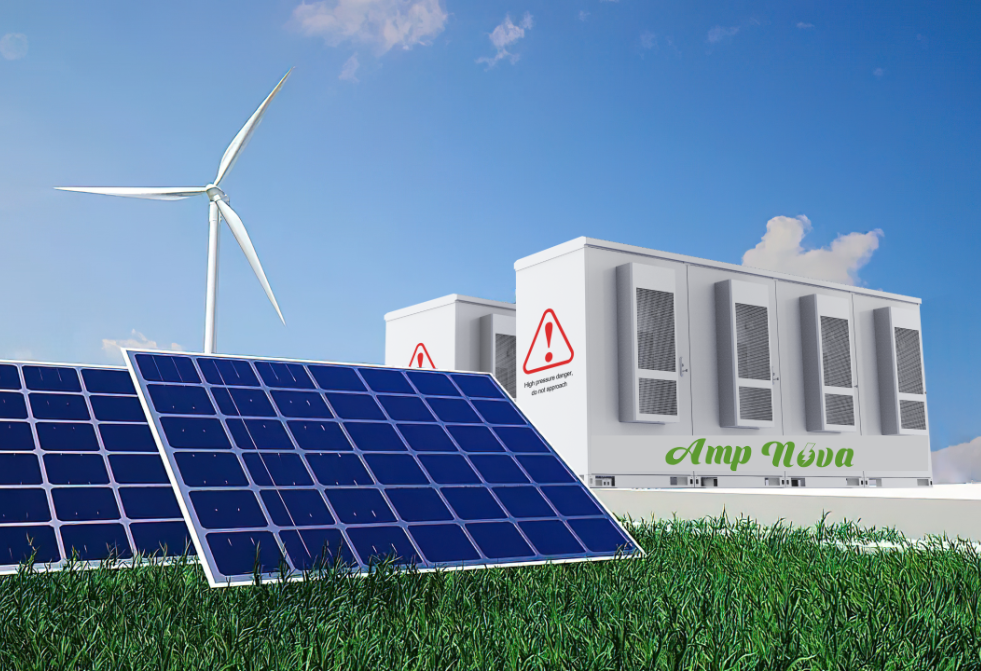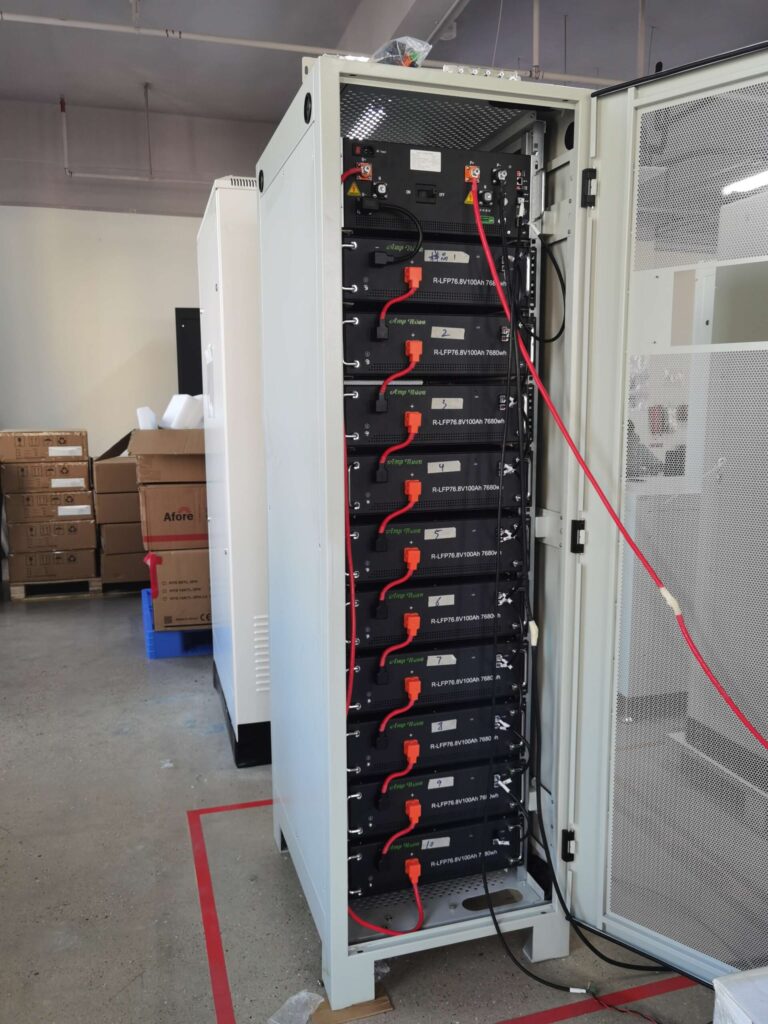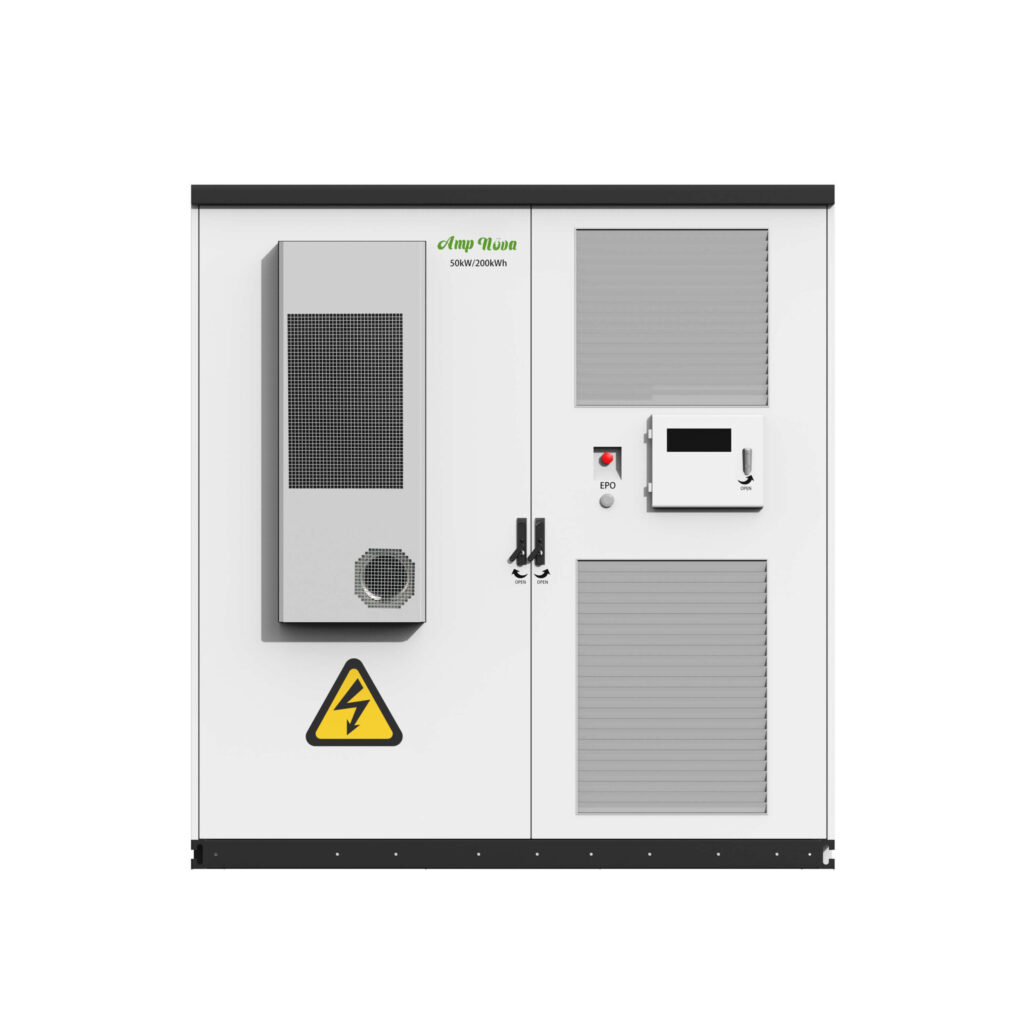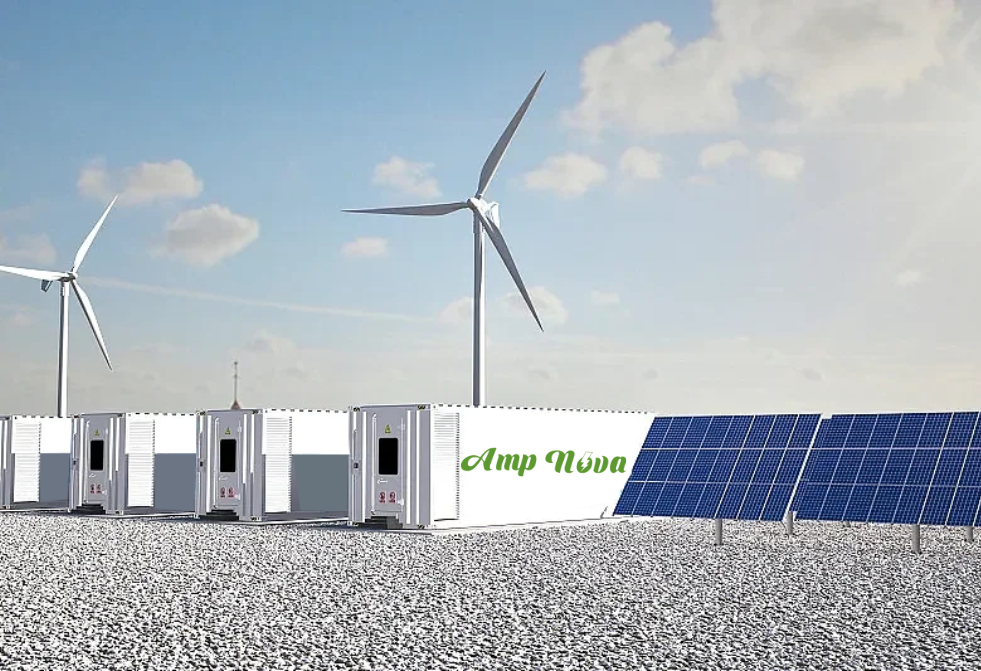- Understanding the Basics of Industrial and Commercial Energy Storage
- Introduction to Energy Storage and Its Growing Importance
- Differences Between Industrial and Commercial Energy Storage
- Applications Of Industrial and Commercial Energy Storage
- How To Choose Industrial and Commercial Energy Storage?
- What Are The Future Aspects?
- Conclusion
Contents
- 1 Understanding the Basics of Industrial and Commercial Energy Storage
- 2 Introduction to Energy Storage and Its Growing Importance
- 3 Differences Between Industrial and Commercial Energy Storage
- 4 Applications Of Industrial and Commercial Energy Storage
- 5 How To Choose Industrial and Commercial Energy Storage?
- 6 What Are The Future Aspects?
- 7 Conclusion
Understanding the Basics of Industrial and Commercial Energy Storage
Industrial and commercial energy storage plays a pivotal role in balancing supply and demand in industrial and commercial settings. By storing energy, businesses can maintain continuity during outages, manage energy costs, and contribute to a more sustainable operation. Understanding the basics requires a grasp of the types of energy storage, applications, and benefits.
- Types of Energy Storage: There are several forms of energy storage systems, including:
- Chemical (e.g., batteries)
- Thermal (e.g., ice storage air conditioning)
- Mechanical (e.g., flywheels)
- Electrochemical capacitors
Each type has its own advantages and best-use scenarios, with chemical storage, such as lithium-ion batteries, being the most common for electrical energy storage.
- Applications: Energy storage systems can be utilized in various applications like:
- Peak shaving to reduce energy costs
- Load shifting to use energy during off-peak hours
- Renewable energy integration to stabilize the grid
- Backup power to ensure uninterrupted operations
- Power quality management
- Benefits: Implementing an energy storage system presents several benefits:
- Cost savings through improved energy management
- Increased energy reliability and security
- Enhanced power quality and grid stability
- Reduction in carbon footprint by enabling renewable energy usage
Industrial and commercial entities must assess their energy needs to choose the appropriate storage technology. Feasibility studies often precede such investments to ensure compatibility with existing systems and to forecast the economic and environmental impacts. Fundamentally, energy storage is about strategic energy management tailored to the unique demands of the industrial or commercial landscape.

Introduction to Energy Storage and Its Growing Importance
In an age where renewable energy sources are increasingly integral to meeting the world’s power demands, the fundamental role of energy storage in industrial and commercial contexts has never been more pronounced. Energy storage facilitates a consistent and reliable power supply, mitigating the inherent intermittency of renewable sources such as wind and solar.
The ability to store energy is critical for:
- Balancing supply and demand, thus ensuring grid stability
- Enhancing the efficiency and reliability of energy systems
- Reducing the need for backup power plants, which are often carbon-intensive
- Enabling peak shaving, where stored energy is discharged when demand—and thus, utility rates—are highest
- Facilitating the integration of distributed energy resources (DERs)
Additionally, technological advancements have ushered in a variety of storage solutions, from batteries to thermal and mechanical systems, catering to diverse industrial and commercial needs.
These factors, combined with climbing electricity prices, a push for carbon neutrality, and policy incentives, are propelling the growth of the energy storage sector. The versatility of storage solutions means industries can tailor systems to specific operational requirements, ranging from short-term power boosts to long-term energy reserves. This customization holds the potential to transform energy management practices and position energy storage as a cornerstone of sustainable industrial and commercial operations.
Differences Between Industrial and Commercial Energy Storage
Energy storage is a critical component for managing power supply and demand in both industrial and commercial settings. However, there are distinct differences between the two regarding energy storage needs, solutions, and applications.
Scale and Capacity
- Industrial energy storage systems are typically larger scale, designed to support heavy machinery, continuous manufacturing processes, and large facilities. These systems often must be capable of storing and discharging vast amounts of energy.
- Commercial energy storage, by contrast, is usually smaller in scale. It caters to office buildings, retail spaces, and small to medium-sized businesses. These systems are designed more for peak shaving, demand charge management, and backup power than for the heavy-duty uses seen in industrial contexts.
Technologies Employed
- Depending on the specific industry needs, industrial applications may use a variety of energy storage technologies, including flow batteries, large-scale lithium-ion batteries, and even thermal and mechanical storage.
- Commercial systems tend to rely predominantly on lithium-ion batteries, which are well-suited to the less rigorous energy demands of commercial operations and have a smaller footprint.
Operational Demands
- Industrial energy storage systems often operate under more demanding conditions, with higher discharge rates, deeper cycling, and often harsher environmental conditions.
- Commercial storage systems typically experience less extreme operating conditions and usually focus on cost savings through energy management rather than the intensive energy support required in industrial settings.
Return on Investment (ROI)
- In industrial settings, energy storage ROI is closely tied to operational continuity, and downtime costs are significantly higher than in commercial settings.
- For commercial enterprises, energy storage investments are measured more directly against energy cost savings and potential revenue generation during peak demand times or through participation in demand response programs.
Understanding these differences is crucial for stakeholders in both sectors as they strategize on integrating energy storage solutions to meet their specific needs.
Applications Of Industrial and Commercial Energy Storage
Industrial and commercial energy storage systems hold immense potential for improving efficiency and reliability in industrial and commercial settings. These applications encompass a range of uses that address specific needs within various sectors.
- Peak Shaving: By using industrial and commercial energy storage during peak demand periods, companies can lower the strain on the grid and reduce their peak demand charges.
- Load Shifting: Industrial and commercial energy storage enables businesses to shift energy consumption from high-cost periods to low-cost periods by storing energy when rates are lower and using it when prices are higher.
- Renewable Energy Integration: Storage systems can be paired with renewable sources like solar or wind to ensure a steady supply of power, even when the renewable generation is intermittent.
- Backup Power: In the event of power outages or disruptions, energy storage systems can provide critical backup power to keep operations running smoothly.
- Grid Services: Industrial and commercial energy storage can support the electric grid by providing services like frequency regulation, voltage support, and capacity.
- Energy Management: Advanced storage solutions offer enhanced energy management capabilities, allowing businesses to optimize energy usage for cost savings and sustainability.
- Microgrid Applications: Energy storage is a core component of microgrids, which can operate independently from the larger grid to provide localized power generation and distribution.
- Electric Vehicle Charging Support: With the rise of electric vehicles, especially in commercial fleets, energy storage can help manage the high load demand from EV charging stations.
These applications are transforming the way businesses think about energy use, offering innovative solutions to improve operations and reduce environmental impact. As technology advances, the breadth and depth of these applications will continue to expand, further enhancing the role of energy storage in the industrial and commercial sectors.

How To Choose Industrial and Commercial Energy Storage?
When selecting an energy storage solution for industrial or commercial applications, it’s essential to consider both the technical specifications and the economic implications. Here are some essential factors to consider:
- Understand Your Energy Needs:
- Calculate your facility’s energy consumption patterns, peak demand periods, and potential for energy efficiency improvements.
- Estimate the amount of energy storage required to meet your needs during peak demand or in the event of power outages.
- Evaluate Different Types of Energy Storage Technologies:
- Compare lead-acid, lithium-ion, flow batteries, flywheels, and thermal storage options.
- Look at their lifespan, efficiency, cycle life, maintenance requirements, and environmental impact.
- Consider Scalability and Flexibility:
- Choose a system that can easily be scaled up or down based on changing energy requirements.
- Ensure the system is compatible with potential future energy sources or grid changes.
- Assess the Economic Viability:
- Analyze upfront costs, ongoing operational expenses, and potential savings from demand charge reductions or participation in demand response programs.
- Estimate the payback period and return on investment (ROI) for the energy storage system.
- Regulatory and Incentive Programs:
- Investigate local regulations, building codes, and incentive programs that might influence your choice.
- Check utility interconnection policies and any financial incentives for installing energy storage.
- Vendor Reputation and Support:
- Research potential suppliers’ and manufacturers’ reputations, ensuring they have a track record of reliable and high-quality products.
- Evaluate the warranty, service agreements, and technical support offered by the vendor.
Making an informed decision on industrial and commercial energy storage involves a thorough analysis of current and future energy demands, a deep dive into technology options, and a sharp eye on economic considerations, including costs, returns, and financial incentives.

What Are The Future Aspects?
The landscape of industrial and commercial energy storage is rapidly evolving, with numerous advancements on the horizon. In the future, this sector is expected to witness:
- Increased Capacity and Efficiency: Efforts to develop batteries with higher energy densities and faster charging capabilities will continue. Research into solid-state batteries and advancements in lithium-ion technology are poised to significantly improve the performance and capacity of energy storage systems.
- Diversification of Energy Storage Solutions: While lithium-ion dominates the market, alternative energy storage technologies like flow batteries, compressed air energy storage (CAES), and thermal storage are gaining traction, likely leading to a more diverse mix of storage options tailored to specific industrial needs.
- Integration with Renewable Energy: As wind, solar, and other renewable sources grow, the need for energy storage to manage intermittent supply will become more critical, thus spurring further integration of storage systems with renewable energy infrastructure.
- Smart Grid and AI Integration: The incorporation of Artificial Intelligence (AI) and Internet of Things (IoT) technologies will make energy storage systems more efficient and responsive. AI algorithms can predict energy consumption patterns and optimize the storage and release of energy to meet demand.
- Regulatory Support and Incentives: Governments are expected to introduce more policies and incentives to promote the adoption of energy storage, bolstering industry expansion.
- Cost Reductions: Economies of scale, together with technological innovations, are expected to drive down the costs of energy storage solutions, making them more accessible for commercial and industrial entities.
- Sustainability Focus: Due to environmental concerns, recycling and sustainability efforts for energy storage systems will intensify, potentially leading to the development of ‘greener’ storage technologies and the circular economy for battery materials.
The trajectory for industrial and commercial energy storage points to a more efficient, diverse, and sustainable future, harmonizing the balance between energy demand and environmental stewardship.
Conclusion
In the exploration of industrial and commercial energy storage, diverse solutions have emerged, each playing a vital role in reshaping energy systems and management for businesses. Embracing this technology allows industries to mitigate the volatility of renewable energy sources, enhance energy efficiency, and achieve a sustainable, cost-effective power supply.
Energy storage technologies have demonstrated transformative potential, particularly in terms of their ability to stabilize grids and facilitate the integration of renewables. Industries and commercial entities adopting these systems aid in the pivotal shift towards a low-carbon economy, with storage solutions contributing to reduced greenhouse gas emissions and reliance on fossil fuels.
For stakeholders, a prime consideration in the adoption of energy storage involves a thorough evaluation of various systems—such as batteries, thermal storage, and mechanical solutions—to ascertain alignment with operational requirements and sustainability goals. The dynamic landscape of regulations governing energy storage systems necessitates ongoing attention to ensure compliance and to capitalize on any governmental incentives that may be available.
To successfully implement an energy storage system, industries must engage in meticulous planning, informed forecasting, and collaboration with knowledgeable partners. Such strategic endeavors are essential in maximizing the benefits of storage technologies, which include cost savings, bolstered energy security, and enhanced operation.
As the sector evolves, innovation in industrial and commercial energy storage will continue to drive significant advances. The commitment of industry and commerce to these developments shapes the future of energy, steering towards a resilient, efficient, and eco-friendly trajectory. As society’s energy needs transform and expand, industrial and commercial energy storage stands as a cornerstone in the new energy paradigm. Solar Battery Manufacturer offers the best solution for industrial and commercial energy storage.
